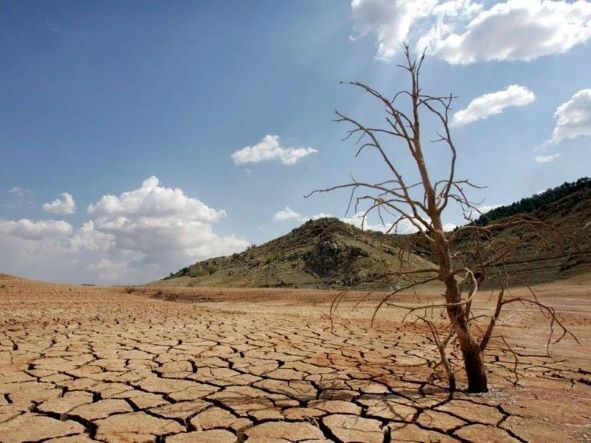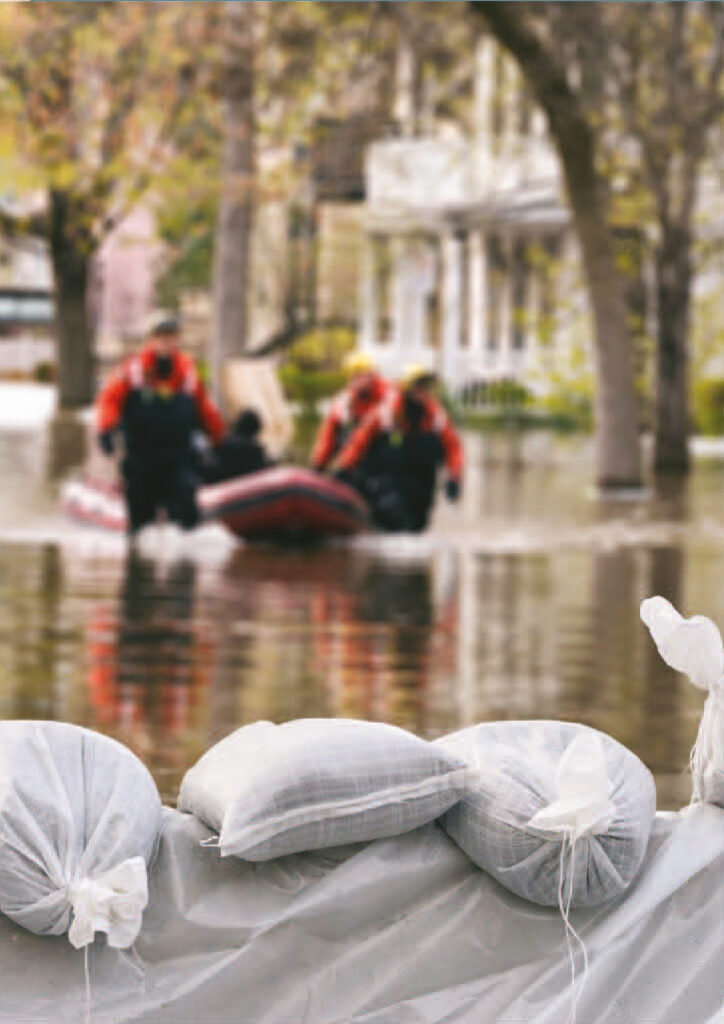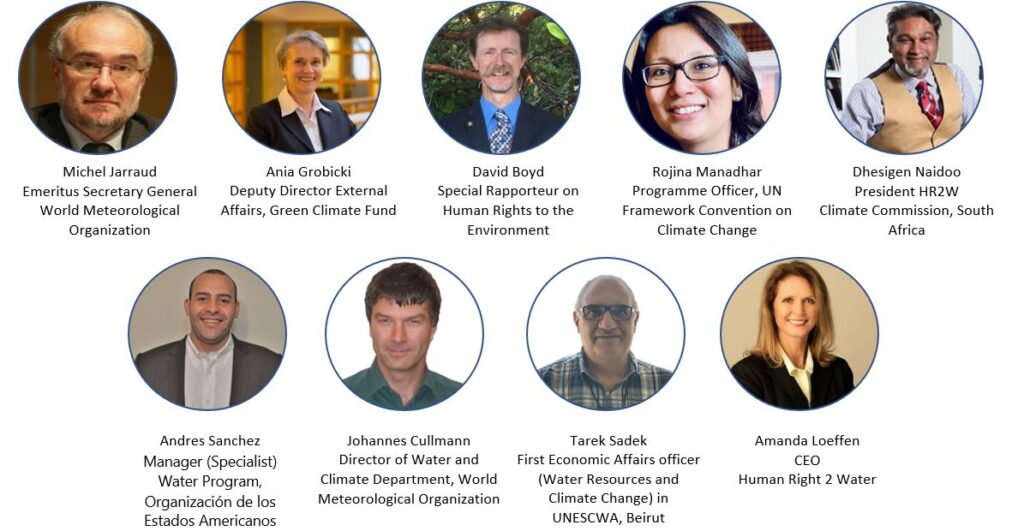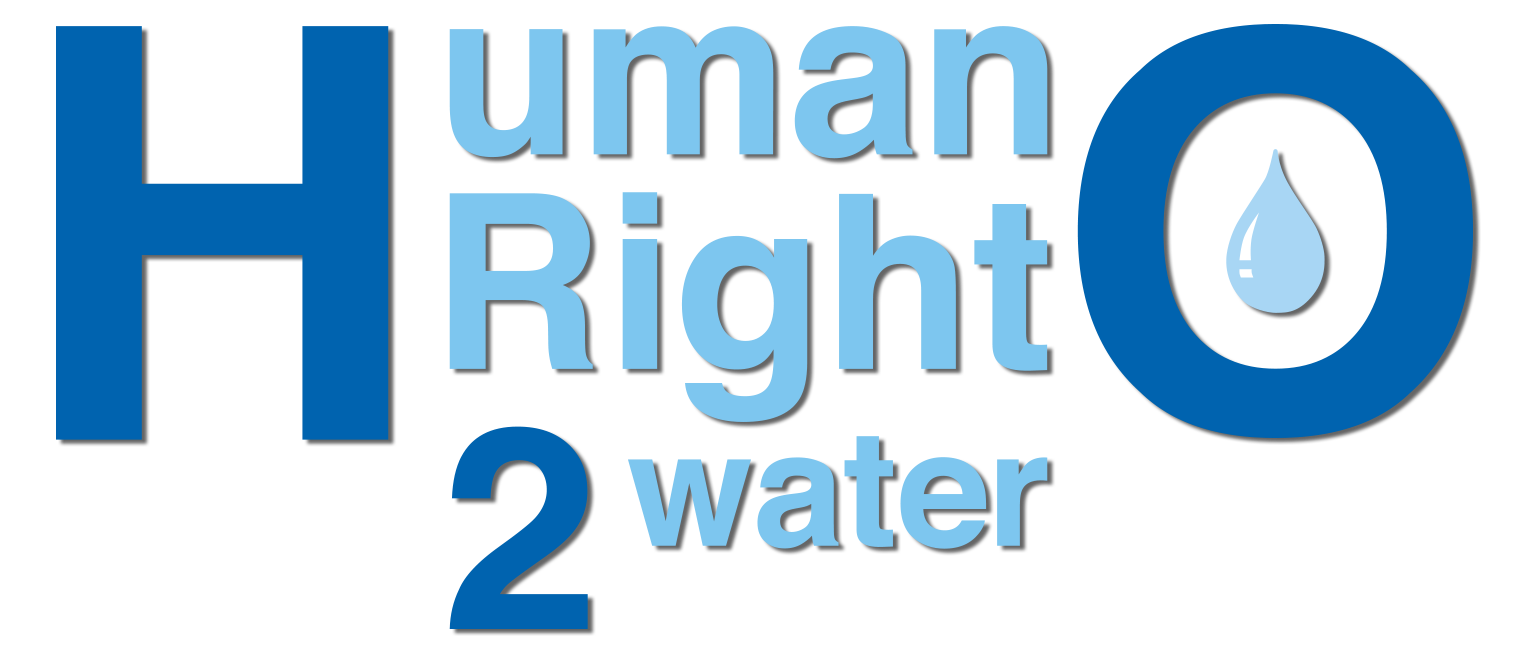How do we increase resilience to climate events, prioritising needs of vulnerable people and their access to clean and safe water, hygiene and toilets? The Special Rapporteur for Human Rights to the Environment, David Boyd, discusses government preparedness with top experts in climate change, water and human rights.
COP26 Science Pavilion, 8th November, 08:00-09:00 GMT, also available by link here.


Resilience to climate disasters can be supported by strengthening the policies that are described by the human rights to water and sanitation (HRWS). The Human Right 2 Water (HR2W) Expert Committee, chaired by Michel Jarraud, has developed a Declaration based on a study in 25 countries, to encourage governments to protect, respect and fulfil these rights, event in an emergency. This is supported by the President of HR2W, Dhesigen Naidoo, Climate Commissioner for South Africa.
The Special Rapporteur on Human Rights to Safe Drinking Water and Sanitation meets top experts in climate change, water and human rights to discuss government preparedness to protect rights to water and maintenance of essential water services after climate events, especially for marginalised people.
Experts from the World Meteorological Organisation (Johannes Cullmann), The Green Climate Fund (Ania Grobicki), the Organisation of American States (Andres Sanchez), The United Nations Framework Commission on Climate Change (Rojina Manandhar), and The United Nations Economic and Social Commission for Western Asia (Dr Tarek Sadek) share the work that they are each doing to support the principles of the Declaration.
In this Declaration, “resilience” describes the ability to protect human rights to water and sanitation (HRWS), to health, and to a healthy environment under emergency conditions. We consider the law implicit in the HRWS as a benchmark to measure a State’s ability to manage pandemics, climate-related events, and other disasters, and to protect people’s access to safe and sustainable drinking water and sanitation.


At the start of the 2020 pandemic many countries rushed to introduce emergency decrees, legislative fixes, and other policies to protect people’s human rights to water and sanitation. Most countries had not anticipated a public health emergency of this kind, and their existing legal framework failed to take account of the stresses on water in emergency situations. While well-meaning, these rushed decisions may lead to unintended outcomes. For example, in some countries, the removal of disconnections due to inability to pay meant that there was a huge over-consumption of water in response, and they ran out of water. Maintaining protection of the human right to water, while balancing the need to support the vulnerable sections of society, therefore requires detailed planning to ensure that affordability and continuity of supply are both fully considered.
In a similar way, the increasing incidence of climate-related emergencies such as floods and droughts require a similar emergency planning approach, to safeguard the human rights to water and sanitation. This Declaration lays out a set of principles that can inform policymaking going forward, so that decisionmakers are better prepared to protect the human rights to water and sanitation in the next emergency.
This Declaration is informed by the analysis of the law of 22 countries in the period from June 2020 to February 2021, examining how they integrated specific criteria of the human rights to water and sanitation to limit the spread of disease and protect people from violation of their rights. The results of this study provide a set of results (see link for methodology and results) that illuminate trends and shortfalls in the integration of emergency planning, regulatory, policy and legal tools — markers that can be useful in all kinds of emergencies related to climate risk, pandemics, and other disasters.
The Human Right 2 Water Expert Committee, March 2021

